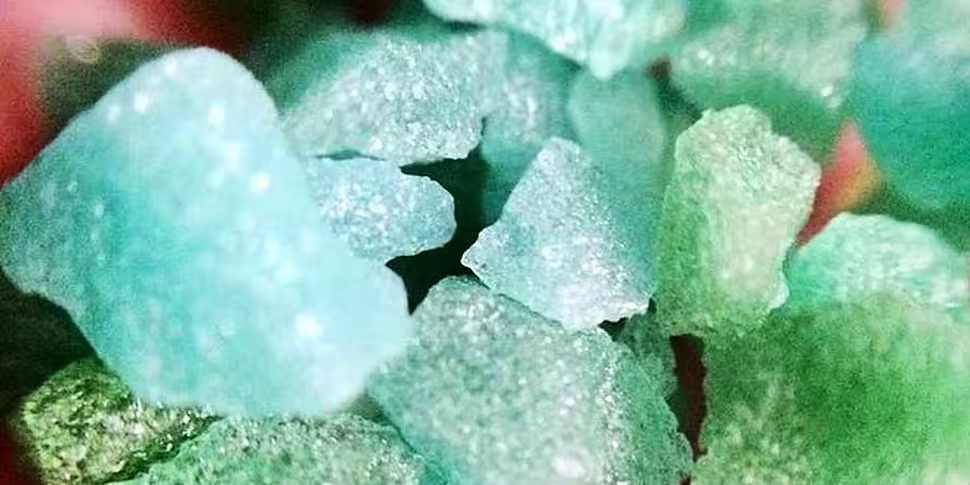Known primarily as popping candy on this side of the Atlantic, this year marks the 60th anniversary of the development of Pop Rocks, small crystal shards of sugar that pop open when exposed to the saliva in your mouth. Their effervescence is their everything, as the crispy bites begin to melt away the moment they enter a consumer’s mouth, fizzily sputtering across the tongue in their castanet cacophony. But once the whoosh of carbon dioxide escaping its artificially-flavoured shell has passed, all your left with is some sugary grit to chew through. Which is why popping candy is at its best when it comes as a surprise, like an extra ingredient in a chocolate bar or salting the rim of a cocktail glass.
But what’s so fascinating about Pop Rocks is less what they are than where they came from, a story steeped in chemical ingenuity and urban mythology.
In 1956, a General Foods research scientist named William A Mitchell developed the candy while attempting to produce a powdered soft drink. Mixing together the ingredients into a syrup, Mitchell then added pressurised carbon dioxide gas before allowing the sugar to cool. This process resulted in small bubbles of the gas getting trapped inside. While originally intended to be mixed with water to create a soda. To begin with, General Foods considered Mitchell’s Pop Rocks to be something of a failure; planned as a carbonated rival to Kool-Aid, when water was added the escaping carbon dioxide did generate a fizz, but considerably less than what was expected from a carbonated drink, so Mitchell then pitched his invention as a candy – something General Foods didn’t produce and for which there was no obvious place in the company.
Mitchell shelved the project, something which management considered a novelty, whipping out fresh new batches at company events for the children of employees, much to their tingling delight.
It took a rival sweet to shake things up; ZotZ, a sherbet-filled hard sweet that fizzed when chewed, were introduced to the Italian market by a confectionery company, becoming an overnight success and showcasing that when it came to fizzing, audience buzz was possible. When, in 1970, General Foods acquired a snack food company, a division manager renewed interest in Pop Rocks, pushing engineers to streamline production techniques and offering free sachets as a promotional tool with other snack foods.
The first sachet of Pop Rocks went on sale in the US in 1975, becoming an immediate success. The buzz surrounding the candy created a massive bootleg industry, buoyed by their scarcity on the market. General Foods released supplies in highly regulated amounts in an attempt to maintain the freshness of the trapped carbon dioxide, meaning the packets meant to retail at 15c now had a street value of $1. It took three years for General Foods to reach production levels that could match demand and ensure nationwide distribution, leading to sales topping 500m packages by 1978. Buoyed on by demand, production increased to 2.5bn packages before Little Mickey came along and ruined everything.
Nobody knows exactly where the urban legend surrounding Pop Rocks started, but it became a full-scale national panic. Rumours ran rampant that unsuspecting children eating from a packet while swilling from a soda can would lead to a build up of gases so severe that the stomach would rupture. Little Mikey, a young boy played by child actor John Gilchrist in a series of adverts for the Quaker Oats’ breakfast cereal Life, was rumoured to have died from the lethal combination.
Seattle became the first battleground, where the federal Food & Drug Administration set up a telephone hotline to assuage parents riddled with anxiety that their children were going to go the way of Little Mikey. General Foods launched its own campaign to smooth over the exploding-belly bellyaches as early as 1979, taking out full-page advertisements in nearly 50 newspapers and magazines. Letters were posted to 50,000 school principals from coast to coast and William A Mitchell was sent on the road on a press tour that saw him explain the only danger Pop Rocks presented was an assault on good manners from an epic burp.
To no avail. The rumour persisted, sales began to drop off and by 1983 General Foods had taken the product off the market, unloading excess inventory to Australia, Great Britain and Ireland, and Korea. Korean consumers were so enamoured with the product that the manufacturing equipment was shipped there in 1985.
These days, the Turkish confectionery brand Hleks is the world leader in popping candy, with the company’s website rather oxymoronically boasting it “makes all the world ‘pop-pop-pop’ in 70 countries, now with own patents.” So if you’ve felt that familiar effervescence across your tongue, chances are it came from there. Just be sure to keep in your mouth, though, lest you end up featuring on Sex Sent Me to the ER...









